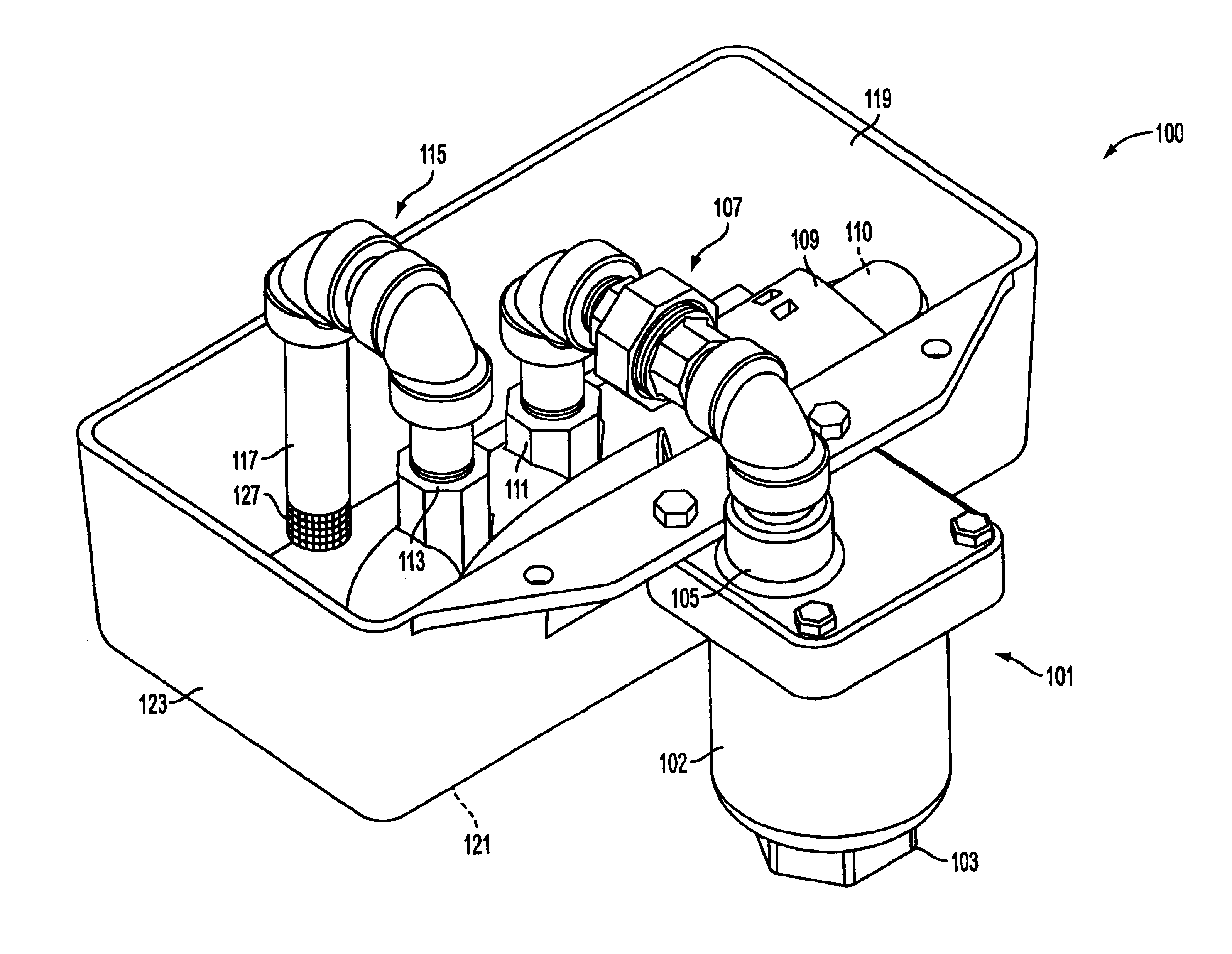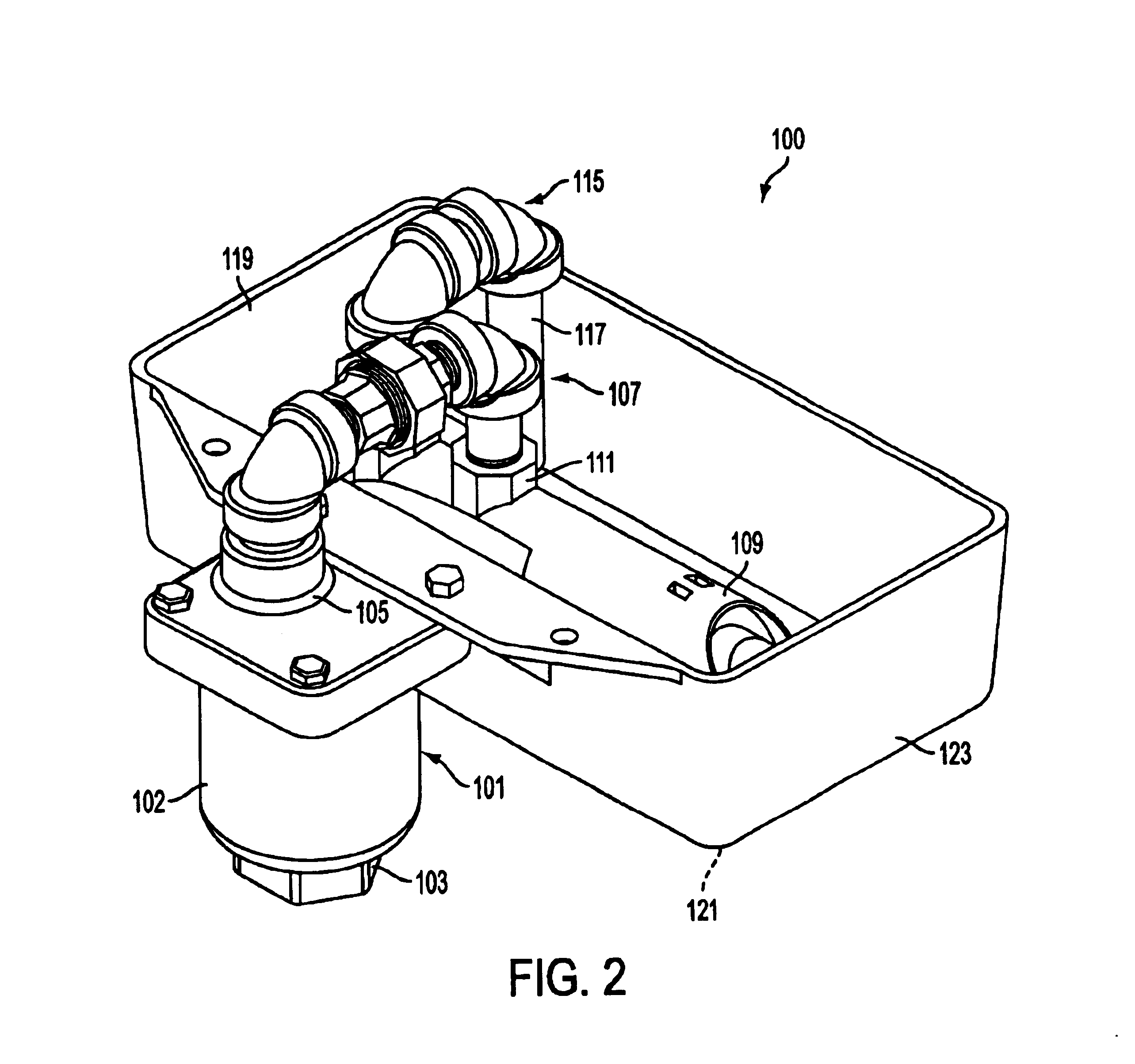Automatic air release system with shutoff valve
a technology of automatic air release and shutoff valve, which is applied in the direction of functional valve types, water supply installation, transportation and packaging, etc., can solve the problems of affecting the maintenance efficiency of the air release valve, and requiring additional labor. , to achieve the effect of preventing damage from a leaking air release valve, preventing damage, and facilitating rapid maintenan
- Summary
- Abstract
- Description
- Claims
- Application Information
AI Technical Summary
Benefits of technology
Problems solved by technology
Method used
Image
Examples
Embodiment Construction
[0026]FIGS. 1 through 5 provide for an embodiment of a system (100) to prevent a failed air release valve (101) from leaking until it can be replaced. Such a system (100) can notify a manufacturer, building supervisor, or other party that the air release valve (101) has failed and needs to be replaced.
[0027]As seen in FIG. 1, the system (100) includes an air release valve (101), which may be any type of air release valve regardless of mechanism but will generally be a float-and-chamber based release valve such as those discussed above. The air release valve (101) is attached via a coupler (103) to a pipe (not shown) which is part of a plumbing system (not shown), such as a fire sprinkler or standpipe system. While discussed mainly in relation to a fire sprinkler or standpipe system, embodiments of the invention may be useful on any fluid-filled plumbing system that comprises an air release valve (such as air release valve (101)), including a hot water, radiating heat system, or othe...
PUM
 Login to View More
Login to View More Abstract
Description
Claims
Application Information
 Login to View More
Login to View More - R&D
- Intellectual Property
- Life Sciences
- Materials
- Tech Scout
- Unparalleled Data Quality
- Higher Quality Content
- 60% Fewer Hallucinations
Browse by: Latest US Patents, China's latest patents, Technical Efficacy Thesaurus, Application Domain, Technology Topic, Popular Technical Reports.
© 2025 PatSnap. All rights reserved.Legal|Privacy policy|Modern Slavery Act Transparency Statement|Sitemap|About US| Contact US: help@patsnap.com



